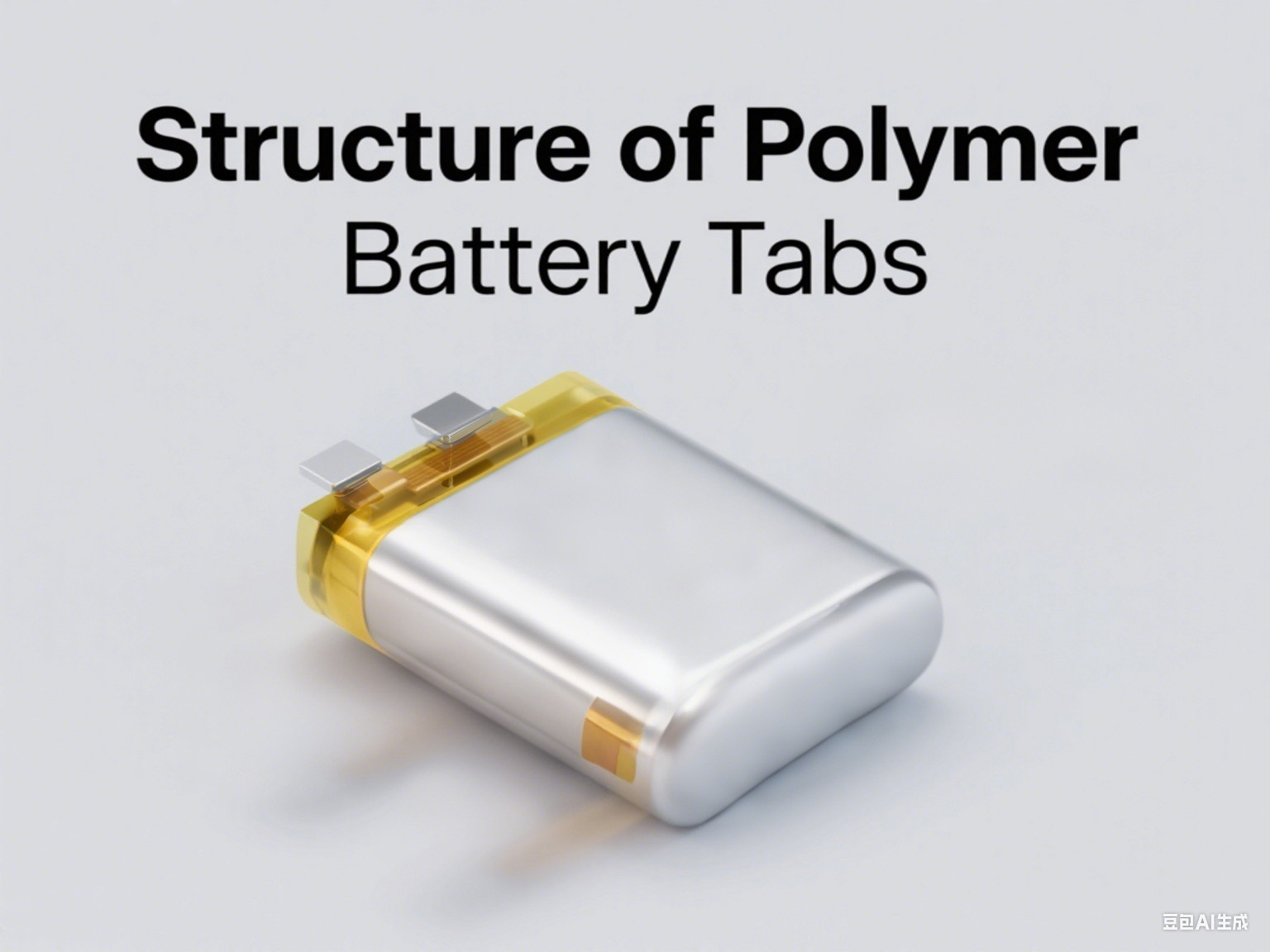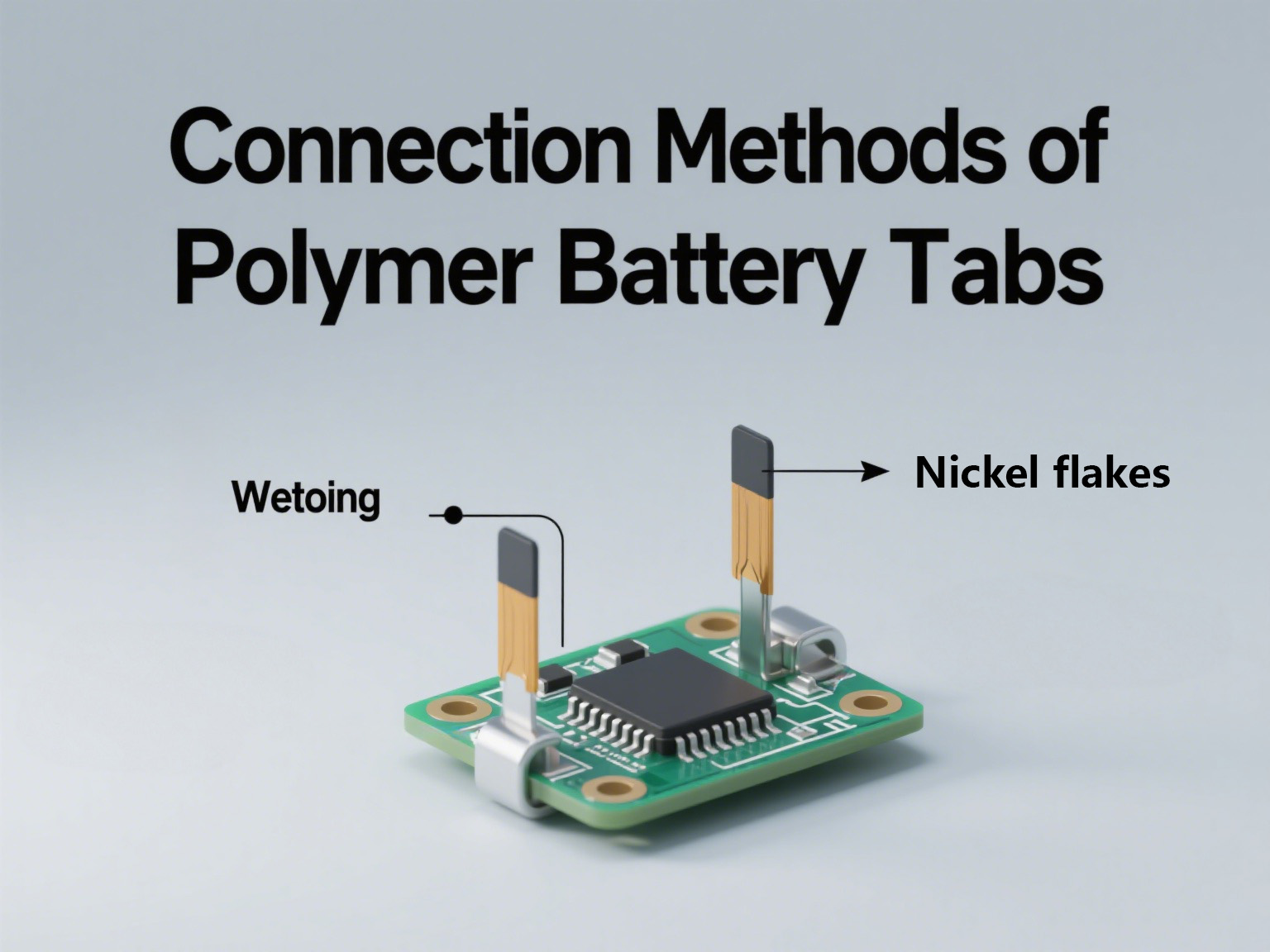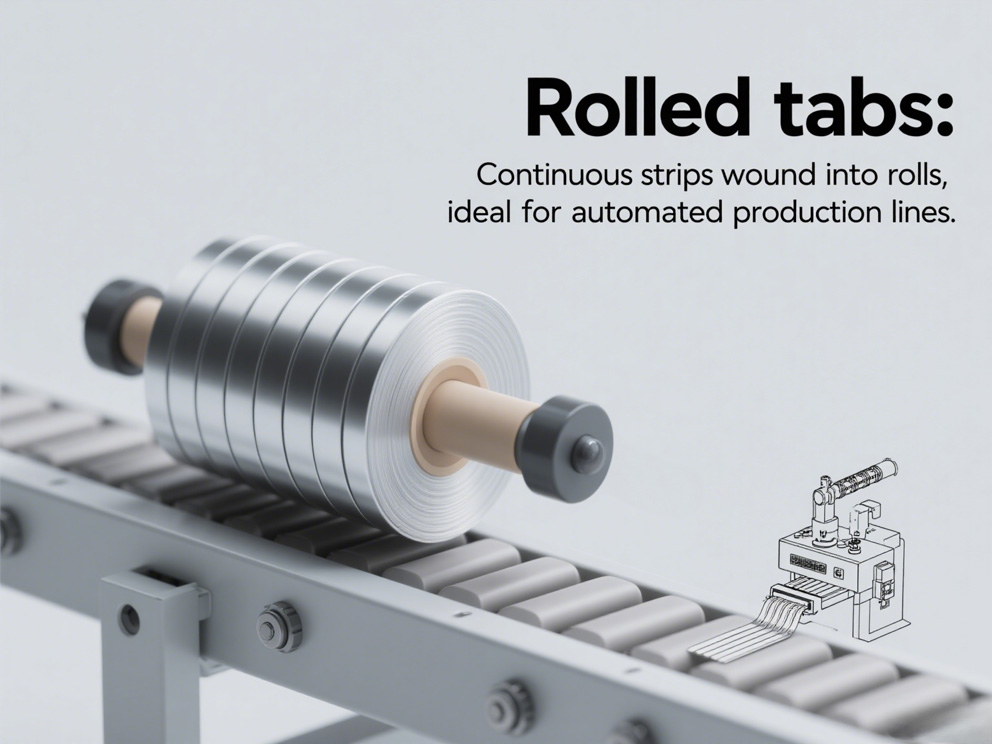Tabs are critical components in pouch lithium-ion batteries, serving as the conductive bridges between the battery’s internal electrodes and external circuits. More than just simple connectors, they play a vital role in ensuring battery safety, sealing performance, and overall operational efficiency. This article explores the types, materials, performance characteristics, and applications of these essential components, offering practical insights for manufacturers and engineers.
What Are Battery Tabs?
At their core, battery tabs are composite structures consisting of two key parts: a metal strip and a plastic film (tab adhesive). The metal strip acts as the conductor, transferring electrical current between the battery’s positive/negative electrodes and external devices. The plastic film, meanwhile, provides a seal to prevent electrolyte leakage and insulates the metal strip from short circuits.
- Positive tabs are typically made of aluminum (Al) due to its excellent conductivity and corrosion resistance.
- Negative tabs use either nickel (Ni) or nickel-plated copper (Ni-Cu). Nickel tabs are common in small digital devices, while nickel-plated copper tabs—valued for their high current-carrying capacity—are preferred for power batteries and high-rate applications.
Classification of Tabs
Tabs are categorized based on their material, adhesive type, and packaging, each suited to specific use cases:
1. By Metal Strip Material
- Aluminum (Al) tabs: Primarily used for positive electrodes. They may also serve as negative electrodes in batteries with lithium titanate anodes.
- Nickel (Ni) tabs: Exclusive to negative electrodes in low-power devices like smartphones, tablets, and power banks.
- Nickel-plated copper (Ni-Cu) tabs: Designed for negative electrodes in power batteries (e.g., electric vehicles) and high-rate batteries, combining copper’s conductivity with nickel’s corrosion resistance.
2. By Tab Adhesive Type
Domestic markets classify tab adhesives by color, reflecting differences in quality and application:
- Black adhesive tabs: Used in low-to-mid-range digital batteries. Their structure (a PEN film core with modified PP layers) risks delamination over time.
- Yellow adhesive tabs: Common in mid-range power batteries. While easier to seal, their non-woven core can absorb moisture, leading to battery swelling.
- White adhesive tabs: Preferred for high-end digital devices, power batteries, and high-rate batteries. Available in single, three, or five-layer designs, three-layer white adhesives (with PP cores) offer superior sealing and no delamination risk.
- Rolled tabs: Continuous strips wound into rolls, ideal for automated production lines.
- Sheet tabs: Individual tabs stacked between plastic sheets, suited for manual or semi-automated processes.
3. By Packaging
- Rolled tabs: Continuous strips wound into rolls, ideal for automated production lines.
- Sheet tabs: Individual tabs stacked between plastic sheets, suited for manual or semi-automated processes.
Key Materials and Performance
The performance of tabs depends heavily on their constituent materials:
- Metal strips: Aluminum (AL1050 alloy) and copper (TU1 oxygen-free copper) are favored for their conductivity, ductility, and corrosion resistance. Nickel plating on copper strips prevents oxidation and enhances solderability.
- Tab adhesives: Most adhesives are imported from Japan, as domestic PP materials struggle to meet strict molecular weight requirements. High-quality adhesives (e.g., three-layer white adhesives) balance heat resistance (melting point ~147°C) and flexibility, ensuring reliable sealing with aluminum plastic films.
Manufacturing and Quality Control
Producing high-performance tabs requires precision:
- Plating processes: Nickel-plated copper tabs use electroplating (1.8±0.3μm thickness) or electroless plating (1.0±0.3μm thickness) to ensure uniform coverage.
- Edge trimming: Metal strips thicker than 0.2mm require edge trimming to avoid insulation issues and leakage risks.
- Rigorous testing:
- Electrolyte immersion tests: Tabs must maintain a seal strength >15N/15mm after 24 hours at 85°C.
- Bend tests: Tabs must withstand 5–7 bends (depending on thickness) to ensure durability in vibrating environments (e.g., electric vehicles).
Tab Connection Methods
Connecting tabs to external circuits involves several techniques:
- Mechanical fastening: Drilling and screwing offer low-cost, strong connections but require careful thickness control.
- Soldering: Low-temperature M51 solder works for dissimilar metals (e.g., copper and aluminum) but is costly.
- Ultrasonic welding: The preferred method for power batteries, using high-frequency vibrations to bond thin tab foils (0.01mm) without excessive heat.
Conclusion
Tabs may be small, but their design and quality directly impact pouch battery performance. As demand grows for safer, more efficient batteries in electric vehicles and energy storage, advancements in tab materials (e.g., multi-layer adhesives) and manufacturing (e.g., precision plating) will remain critical. Understanding tab characteristics is key to optimizing battery reliability and longevity in diverse applications.
Post time: Jul-14-2025










